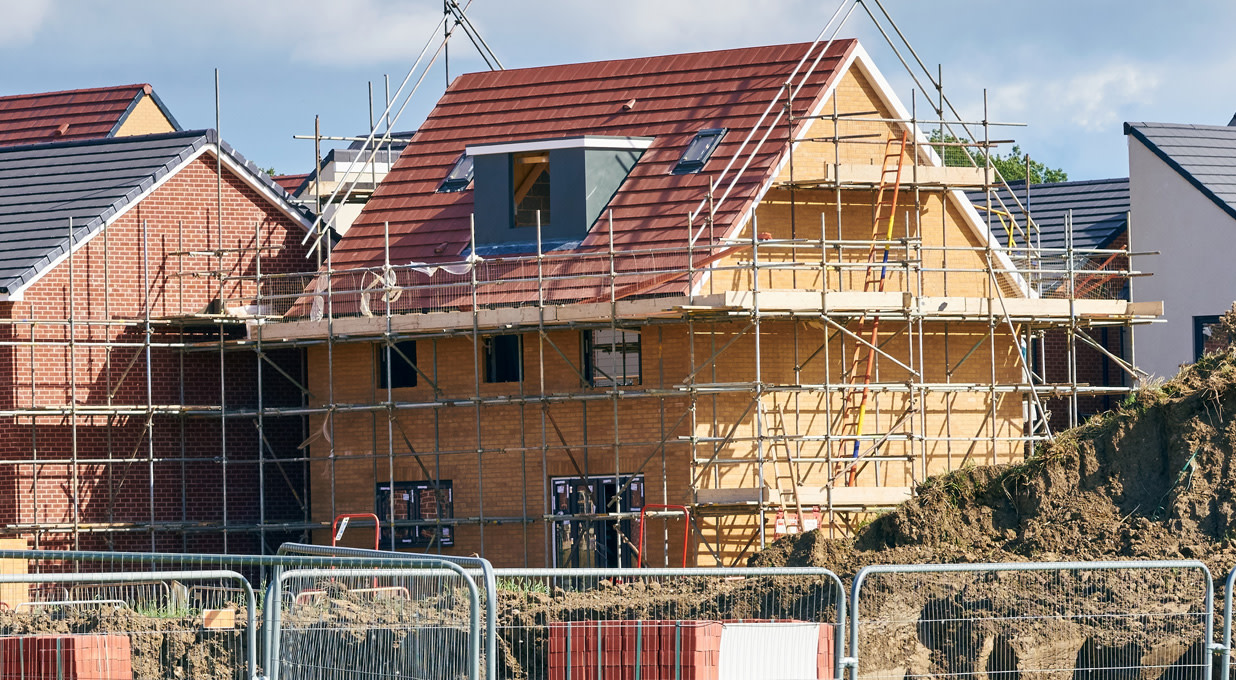Ibstock’s full-year revenue fell 21% to £406mn, reflecting “significantly lower” sales volumes in its residential construction markets. Brick prices remained stable throughout the year.
Underlying cash profits (EBITDA) fell 23% to £107mn. This was in line with prior group expectations, driven by the falling revenue.
Underlying free cash flows worsened from an inflow of £50mn to an outflow of £16mn. Net debt rose from £46mn to £101mn.
Ibstock expects residential construction markets to remain subdued throughout 2024. Cost-cutting measures are expected to deliver around £15mn of savings this year.
A final dividend of 3.6p per share has been announced. That takes the full-year total to 7.0p, down from 8.8p.
The shares fell 1.7% following the announcement.
Our view
Ibstock had a tough 2023, wrestling against all the challenges that come alongside a housing market slowdown. Residential volumes dropped significantly in 2023, and the group expects business to remain subdued over the near term.
To combat the weak market backdrop, Ibstock’s reduced its fixed costs. It’s permanently closed two of its brick factories and cut headcount in a bid to reign back production, carefully matching supply with demand to avoid a build-up of inventory.
These efforts to streamline the business should bring cost savings of around £15mn in the current year. And while demand and revenue remain weak, cost-cutting measures remain the key route to preserving margins, which have held up relatively well so far.
Looking ahead, the pace of cost inflation has eased from previous highs. This provides a little bit of breathing room for margins, but make no mistake, the issue remains one to grapple with throughout the year.
Despite the recent site closures, Ibstock still has the largest brick-making capacity in the UK. And recently completed upgrades to other sites should help lower production costs while also giving room to increase output when needed. That means the group's arguably better placed to benefit from higher demand when it eventually arises. But exactly when activity will pick back up is difficult to map.
There's also a push to become a leader in more sustainable housebuilding with the advent of Ibstock Futures. The first order of business for this new arm is brick slips, a type of lightweight brick facade. The group's invested heavily to build the UK's first brick slip factory, which should help fuel growth prospects when the market turns. But in the meantime, it's putting a strain on Ibstock's cash flows.
While it’s too early to call for certain, there are some very early signs that residential volumes are beginning to bottom out. The fact that lenders are becoming more competitive on mortgage rates is a major positive for homebuyers, which should ultimately feed through to increased demand for Ibstock's products. But should that picture change and a more significant slowdown materialise, we could see Ibstock's volumes fall further, leaving little scope for price rises to help soften the blow.
All in, Ibstock still has attractive long-term growth prospects, especially in the brick slips segment. But we expect demand to remain relatively weak into 2025, meaning there's plenty of room for negative shocks. Investors should expect a bumpy ride.
Ibstock key facts
All ratios are sourced from Refinitiv, based on previous day’s closing values. Please remember yields are variable and not a reliable indicator of future income. Keep in mind key figures shouldn’t be looked at on their own – it’s important to understand the big picture.
This article is not advice or a recommendation to buy, sell or hold any investment.No view is given on the present or future value or price of any investment, and investors should form their own view on any proposed investment.This article has not been prepared in accordance with legal requirements designed to promote the independence of investment research and is considered a marketing communication.Non - independent research is not subject to FCA rules prohibiting dealing ahead of research, however HL has put controls in place(including dealing restrictions, physical and information barriers) to manage potential conflicts of interest presented by such dealing.Please see our full non - independent research disclosure for more information.


